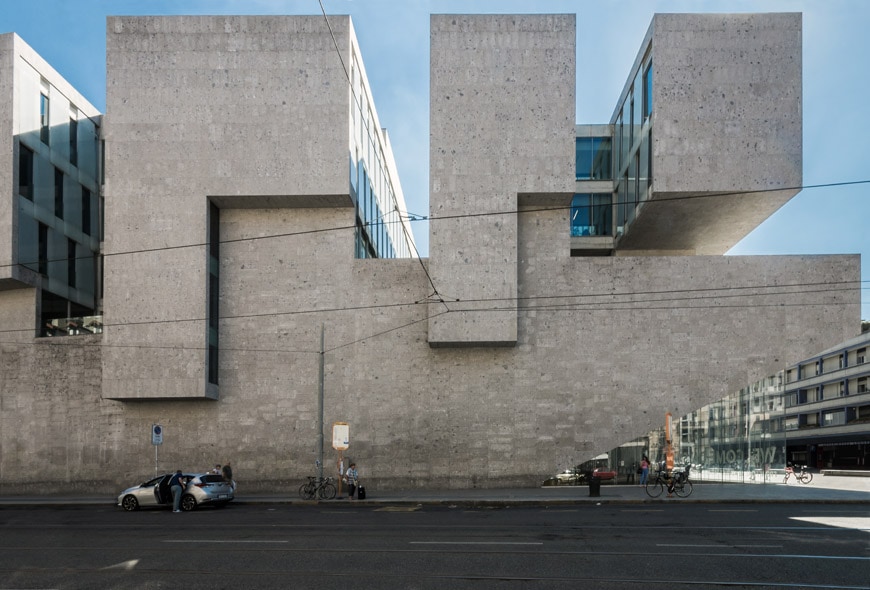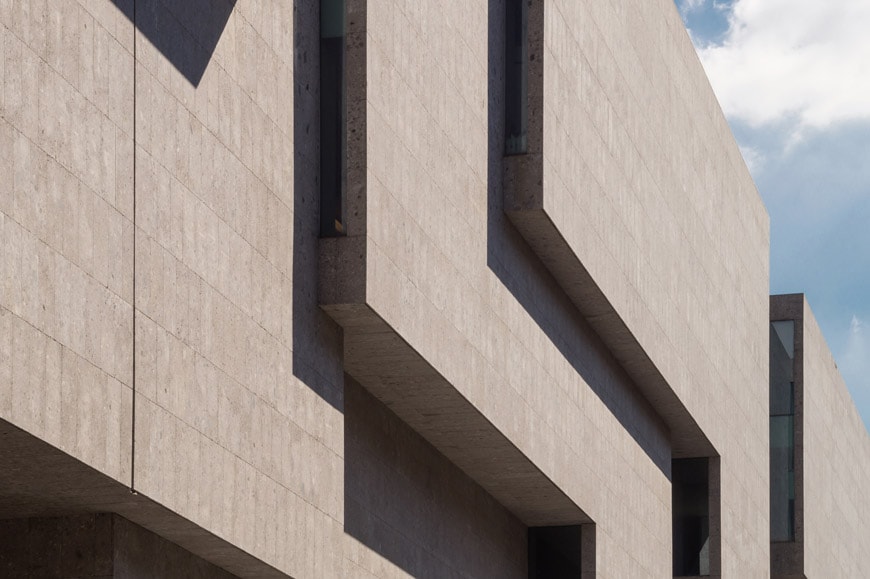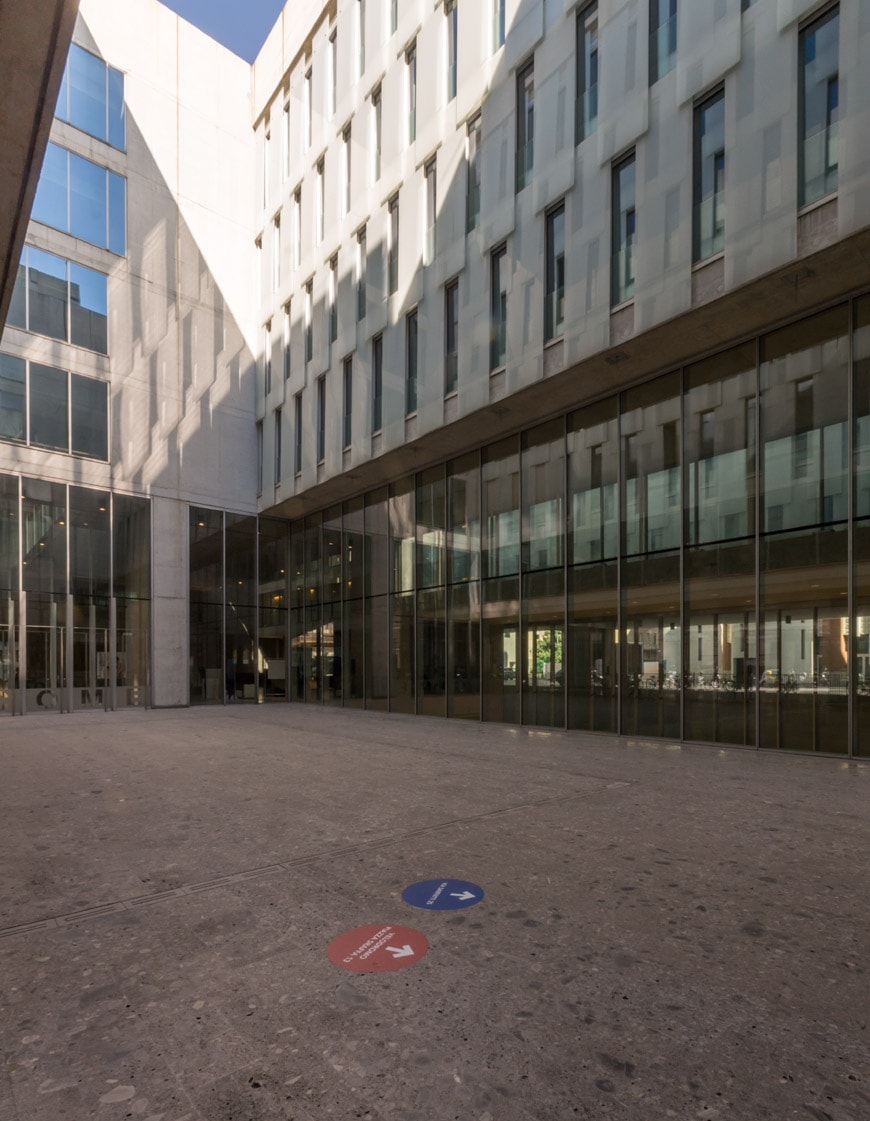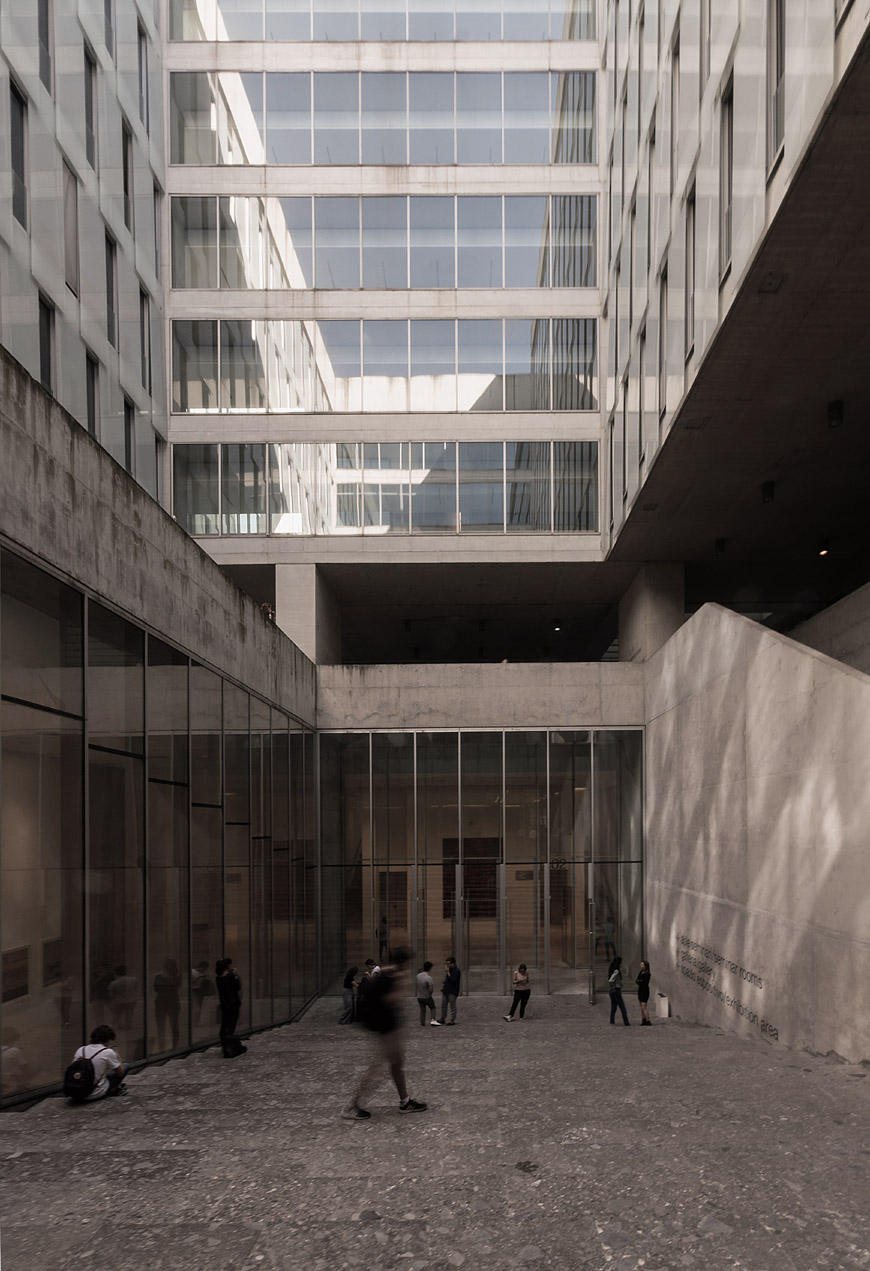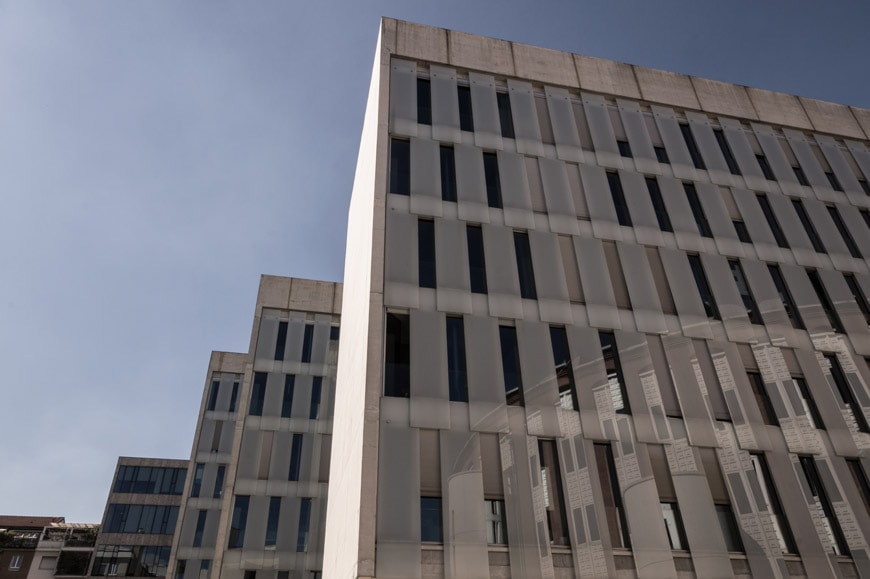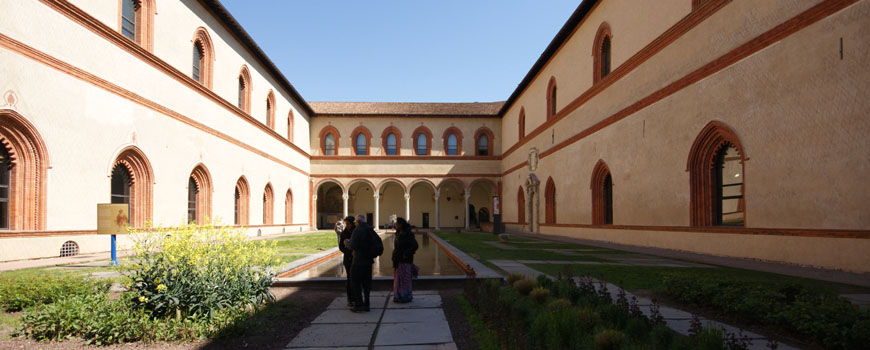Grafton Architects – Bocconi University School of Economics, Milan
Università Luigi Bocconi
The Bocconi University School of Economics in Milan by Grafton Architects; photo © Riccardo Bianchini / Inexhibit
Grafton Architects – Luigi Bocconi University, School of Economics, Milan
Completed in 2008, the Bocconi University School of Economics building in Milan is one of the most renowned works by Dublin-based Grafton Architects.
Winner of the World Buiding of the Year 2008 award, the school designed by the practice led by Yvonne Farrell and Shelley McNamara is a massive stone-clad construction located in the Ticinese neighborhood, a densely populated area in central Milan.
Occupying an entire urban block, the new 65,000-square-meter / 700,000-square-foot faculty building contains a 1000-seat aula magna, a 2,500-square-meter foyer, a temporary exhibition space, five conference halls, four classrooms, 731 offices for the academic staff, 34 meeting rooms, a library, and a cafe.
Farrell and McNamara’s school consists of three distinct parts: a sunken volume, a relatively-open ground floor, and a sequence of boxes “hovering” above the ground level.
The 3-story underground volume houses the Aula Magna, the foyer, the exhibition hall, four classrooms, a car park, and various technical areas.
The ground floor volume is a visually permeable and freely-accessible ensemble of entrance halls, courtyards, and public facilities, such as the cafe, aimed to be a “filter between the city and the university”.
Above that, most of the functional spaces of the school – including offices for over 1,200 people, meeting rooms, a library, and eight coffee-break rooms – are contained in fifteen 5-story “boxes” separated by nine courtyards in a “beehive-like” configuration.
Rather than a single building, this makes the school look more like a campus composed of various pavilions, but arranged in a vertical configuration instead of a horizontal one.
The five-story office blocks on the southern edge of the Bocconi University site; photo © Riccardo Bianchini / Inexhibit
After seeing it firsthand, I find Grafton’s Bocconi University a bit over imposing and vaguely intimidating from the outside; this is possibly intentional since the architects and the client wanted the architecture of the building to be representative of the status and pre-eminence of the Bocconi University, one of the most prestigious private universities in Italy.
“This frontage becomes the architectural opportunity to have a ‘window’ to Milan, a memorable image to confirm the important cultural contribution that the Bocconi University plays in the life of this city. For this reason, the public space of the aula magna occupies this frontage, asserting a symbolic presence and a register of the prestigious status of the University”. Grafton Architects
That severe appearance is also a consequence of the material used for its exterior cladding, a gray stone known as “Ceppo di Gré” typical of the, notoriously austere, traditional Milanese architecture.
The facade on Viale Bligny, and a detail of the stone cladding; photos © Riccardo Bianchini / Inexhibit
Walking past the entrance, the building becomes a little cozier; yet its “monumental” size and the almost complete absence of green areas and vegetation make its courtyards slightly oppressing and do not contribute to give the building the look of ”a large market hall or place of exchange“ the architects wanted it to have.
Yet, such high density was largely inevitable. Indeed, Milan’s building regulations do not allow for buildings higher than 22 meters in the area; therefore is quite appreciable that Grafton Architects were able to fit 65,000 square meters of gross floor area into an 80×160-meter site creating, at the same time, nine courtyards.
The Bocconi School of Economics is a highly sustainable building, the courtyards provide plenty of natural illumination and ventilation (all offices have a window looking outside, for example), and the massively insulated facades protect the internal spaces from the noise of the city’s traffic; finally, heating is provided by a ground-water heat pump system.
Two of the inner courtyards; photos © Riccardo Bianchini / Inexhibit
Detail of the office building’s facade, and a view from Viale Bligny; photos © Riccardo Bianchini / Inexhibit
copyright Inexhibit 2024 - ISSN: 2283-5474



